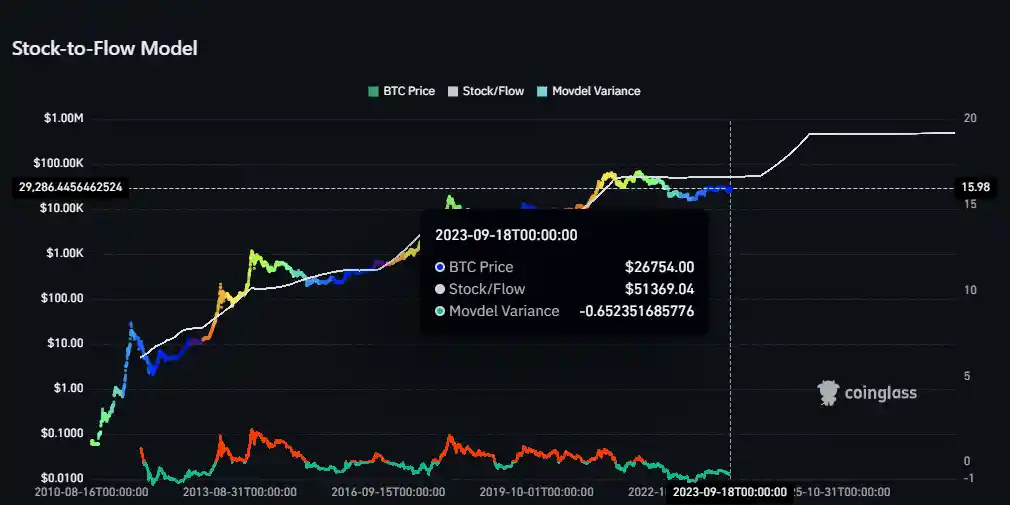- Bitcoin’s price started to rise earlier this week, breaking out of the $25,500 to $26,500 price range and successfully surpassing the $27,000 resistance level.
- The Stock-to-Flow (S2F) model, designed by renowned crypto analyst Plan B, helps in making price predictions for Bitcoin. This model treats Bitcoin as comparable to commodities like gold, silver, or platinum.
- A divergence between the Bitcoin price and the price calculated by the stock-to-flow model began in April 2022. This separation is increasing today.
According to the predictions of the Bitcoin Stock-to-Flow model designed by the famous analyst, at what dollar should Bitcoin be traded at now?
Bitcoin Price with the Stock-to-Flow Model

Bitcoin’s price started to rise earlier this week, breaking out of the $25,500 to $26,500 price range and successfully surpassing the $27,000 resistance level. After declining since August 16th, Bitcoin saw a drop to $24,900 on September 11th, after which the price quickly recovered. Currently, BTC is trading at around $27,260.
The Stock-to-Flow (S2F) model, designed by renowned crypto analyst Plan B, helps in making price predictions for Bitcoin. This model treats Bitcoin as comparable to commodities like gold, silver, or platinum, known as “store of value” commodities due to their relative scarcity, which allows them to retain value over long periods. Increasing their supply significantly is challenging, as the process of discovery and mining is expensive and time-consuming. Bitcoin shares similar characteristics because it is also scarce.
Stock-to-flow ratios are used to assess a commodity’s current stock (total current supply) in relation to the new production flow (the amount mined in a specific year). In this context, according to the model designed by Plan B, Bitcoin’s price should currently be at $51,369.
As seen in the chart above, there has been a divergence between the price of Bitcoin and the price calculated by the Stock-to-Flow model since April 2022. This divergence has been growing over time. Although there hasn’t been a perfect match between the Bitcoin price and the Stock-to-Flow model, the price has generally moved in line with the model.
Features of the Stock-to-Flow Model
The colored dots on the price line in the graph represent the number of days remaining until the next Bitcoin halving event. This is an event where the new block mining reward is halved, meaning miners receive 50% less Bitcoin for verifying transactions. Bitcoin halvings are planned to occur approximately every 210,000 blocks (roughly every four years) until a maximum of 21 million Bitcoins is reached. This increases the stock-to-flow ratio (scarcity), theoretically leading to an increase in price. This has held true in Bitcoin’s history.
The Stock-to-Flow line on this graph includes a 365-day average to correct for changes caused by halving events in the market over time.
In addition to the main Stock-to-Flow chart, a deviation chart (bottom part of the graph) has been created to show the difference between price and stock-to-flow. When the price moves towards the stock-to-flow (the deviation line turns from green to red), this allows us to easily see how price interacts with stock-to-flow over market cycles.
Currently, this deviation has reached -0.65. The deviation was more positive at -1.10 at the beginning of 2023. During the Bitcoin halving in 2020, the deviation was positively skewed, and the price was recorded above the Stock-to-Flow model.

